(Skip to bullet points (best for students))
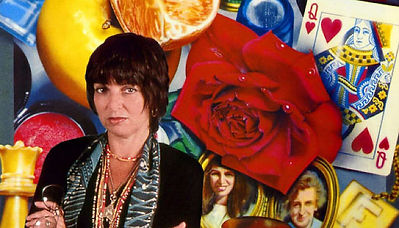
Born: 1931
Summary of Audrey Flack
When Audrey Flack changed her focus from abstract expressionism to figurative self-portraiture, it was partly in response to the difficult personal circumstances she was experiencing at the time. In the wake of a better domestic situation, Flack shifted her focus to objects rather than the “self,” employing the copying, tracing, and enlargement techniques associated with Photorealism’s aesthetic. Flack’s newfound fame led to her becoming a well-respected and well-known figure in the art world. It was through the three-dimensional representation of the classical goddess that Flack explored issues of history and female representation rather than trying to repeat her greatest successes. In an effort to reimagine the heroic, post-modern female figure, she has recently turned to two-dimensional painting and printmaking.
Flack’s first series of authentic self-portraits marked a departure from the large-scale gestural abstractions that marked the beginning of her career. Flack’s unadorned self-examinations, like Rembrandt’s, were typically realised in sombre, earthy tones, thanks to her formal training in anatomical art.
Flack’s focus shifted to the outside world as she progressed into Photorealism. By projecting, tracing, and recoloring actual historical events onto large canvases, she was able to achieve a photo-realistic effect. Additionally, she created Vanitas paintings, which are traditional still-life paintings infused with religious and moral symbolism, in which she re-imagined classic photographs in new ways. Using an airbrush, Flack would give her subjects an advertising-style burnished gleam, giving their portraits a dramatic, hyper-realistic quality.
Flack used sculpture to delve deeper into the politics of female representation by focusing on the three-dimensional realm. Medusa (1989) and Sofia (1995), for example, were based on ancient myths, but Flack reimagined them for the postmodern age. Through a slew of self-aware and kitsch allusions to popular culture, she brought her characters into the modern age. Contemporary viewers could immediately identify with her figures, which challenged the idea that women are only represented in mythical or archetypal ways.
Biography of Audrey Flack
Childhood
Audrey Flack was born in 1931 to a middle-class family in Washington Heights, New York City. Audrey’s parents were Eastern European emigrants, and as a result, she was taught Hebrew and attended Jewish summer camp during her childhood. For her disruptive and restless behaviour in junior high school, Flack was often punished with a desk in the hallway where she was given a supply of pencils and paper to keep her busy. When she was expelled from school, she discovered her true calling. For Flack, art had become a way to express herself, so she became a “class artist” creating calendars and art displays for her school. For personal reasons, Flack had become enamoured with the swimmer-cum-actress Esther Williams and made a diorama in her honour. Her admiration for iconic female figures would also prove useful in her future endeavours.
Early Life
Flack, who was 13 at the time and still dissatisfied with high school, was accepted to the Music and Art High School in New York City after submitting a series of pencil drawings on typewriter paper and copied faces from newspaper photographs and advertisements. She spent four years at the school (until 1948). Milton Flack, Flack’s older brother, returned from World War II in 1945. While Milton was suffering from post-traumatic stress disorder, the siblings were forced to share a room in the family home “He was never without his firearm. In the middle of the night, if you entered his room. There was a shot fired! “Aside from her love of Picasso and Juan Gris, Flack’s budding artist was also interested in Georges Braque and Juan Fernandez de Mendoza during this time.
At The Cooper Union in New York City in 1948, Flack began his art education, completing his degree in 1951. Nicholas Marsicano, a founding member of the Greenwich Village Artists’ Club, a weekly gathering of up-and-coming artists, taught her there. Flack was one of only a handful of women invited to join the ranks of the organisation. Flack was enamoured by the likes of Franz Kline and Jackson Pollock, and even produced large-scale abstractions that followed in their footsteps. She was almost in love with the abstract painters she encountered, but she couldn’t get her head around the male-dominated environment she found herself in. Josef Albers, a Bauhaus artist, convinced her to enrol at Yale University and pursue a Bachelor of Fine Arts degree. For this reason, Albers pushed Flack toward a more political approach in her work while she studied at Yale. Flack, on the other hand, felt that there were still some gaps in her training. “I had this burning desire to draw like a master” she said after graduating from the Art Students League in 1953 and enrolling in Robert Beverly Hale’s course on human anatomy at the Art Students League. During this time, Flack began painting realistic depictions of human beings.
Mid Life
As a student at The Cooper Union, Flack produced her first significant works. In her early abstracts, she was influenced by Kline’s spontaneity and Braque and Picasso’s structure. Through this series of self-portrait paintings, influenced by Rembrandt, that she did in the 1950s, she came to her own artistic maturity. Flack’s first husband, a composer and cellist, and their two daughters, Mellissa, who was autistic, and Hannah, were all living in a cramped apartment with her at the time. Flack had a difficult time juggling her roles as a mother, wife, and artist. “As a later recollection, “I remember painting Kennedy Motorcade [in 1964] when Melissa was 4 and Hannah was 2,” she said. I had no one to help me as they scurried around my feet.”
Flack would often paint in the middle of the night in the apartment’s living areas, which doubled as her studio. “the thing that kept [her] sane” was Flack’s painting. It was only in the late Sixties that she and her husband divorced, leaving her as a single mother who had to rely more heavily on the sale of paintings and private commissions. A shift in her personal circumstances led to a new artistic direction. To begin with, Flack painted social commentary, painstakingly reproducing photographs of people from all social strata at a time when direct photocopying was still considered, at least from a fine art point of view, somewhat fraudulent. With Farb Family Portrait (1969-70), the artist made an important breakthrough by using a photograph projected onto her canvas and traced with unnatural, animated colours to achieve an entirely new level of photorealism or Photorealism. She was able to achieve this level of realism because she projected the photograph onto her canvas and traced it with unnatural, animated colours.
Meanwhile, Flack was enchanted by the 17th century sculptor Luisa Roldan’s Madonnas, which she replicated using the same method, but this time Flack added tears to her creations. Flack’s “sudden and intense fame” can be attributed to the unique combination of painted perfection and emotionally charged content that defined her personal style. Her interest in Christian iconography led some to assume she was a Catholic, which was ironic, as Flack noted. As a result of this misunderstanding, the Madonna/goddess iconography laid the groundwork for a series of airbrushed Vanitas paintings that followed in the Baroque tradition by arranging personal objects, mementos, and family photographs. These exhibitions included Twenty-two Realists at the Whitney Museum of American Art in 1972, and, in 1975-6, Super Realism at the Baltimore Museum of Modern Art. Cooper Union awarded her an honorary doctorate in 1977. In the 1970s, Flack married Bob Marcus, a commodities trader who became the adoptive father of her daughters Mellissa and Hannah.
Late Life
She published a book in the early 1980s, entitled Art and Soul, and was invited to lecture at Pratt, the New York University’s School of Visual Arts, and Cooper Union, among other institutions. The Saint Gaudens Medal was awarded to her in 1982. “Our society is fragmented, empty, and falling apart” Flack said, “I wanted to make solid objects, things that people could hold on to” During this time she shifted her focus from painting toward sculpture, which she learned on her own.
Meanwhile, her connections to powerful women became more prominent as she sought to challenge the idea of “male centred mythologies” as the art historian Thalia Gouma-Peterson had put it. Female deities and goddesses were resurrected in Flack’s work in an effort to bring back women who have been either demonised or ignored by history (historicism). These symbols were inspired by ancient mythology and feminism as well as modern American symbols such as guns, aeroplanes and military figurines. Her iconography was drawn from these sources.
While still living in Manhattan, Flack has recently returned to two-dimensional work. Heroic female figures continue to be a theme in her drawing, printmaking, and painting. However, she has to balance her time in the studio with her academic obligations. George Washington University and the University of Pennsylvania currently have her as an honorary or guest lecturer. Hollis Taggart Galleries and the Louis K. Meisel Gallery represent her in New York and Los Angeles, respectively.
However, she is best known as a member of the Photorealist movement of the 1970s, alongside Malcolm Morley and Chuck Close and Wayne Thiebaud despite the fact that her aesthetic is greatly harmed by it. Her work has been compared to Andy Warhol, Tom Wesselmann, and Roy Lichtenstein’s Pop Art because of her focus on female icons and archetypes. At a time when the modern artist’s ability to produce truly original works of art was being seriously questioned, Flack made her debut on the international art scene. There was a shift away from the Greenbergian elitism that accompanied Abstract Expressionism to the idea that the avant-garde could best serve itself by engaging with popular culture. The era of postmodernism was born as a result.
When it comes to female artists, Flack is widely regarded as one of the most courageous and honest. While the Photorealists – self-consciously, it must be said – produced more disengaged images of everyday life, her asserted femininity sets her apart from them (such as cars, boats and shop fronts). In fact, Flack’s appropriation of mass media imagery pre-dated Richard Prince and the Pictures Generation’s appropriation art. When it comes to the American Neo-Pop artist Jeff Koon’s work, he was indebted to her lavish visual indulgences of colour, light, and form and her revivals of Baroque, Rococo and kitsch traditions. Flack’s early interest in self-portraiture, when interpreted as a means of addressing contemporary female identity issues, contributed to a paradigm shift in modern art. Cindy Sherman and Gillian Wearing, for example, may look to Flack as a model for their own explorations of their own identities through costume or disguise as a result of her pioneering work.
Famous Art by Audrey Flack
Abstract Force: Homage to Franz Kline
1951
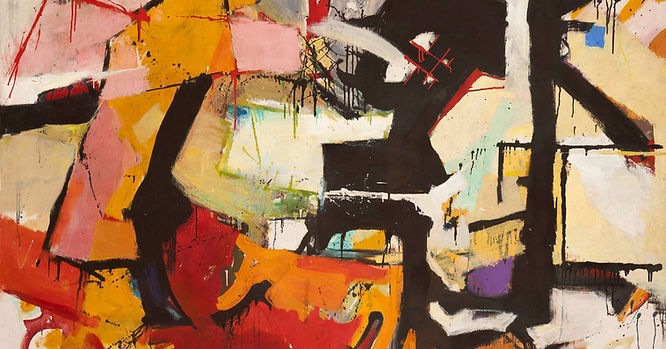
First, Flack immersed herself in the Abstract Expressionism movement. After graduating from Cooper Union in New York City’s Greenwich Village, Flack joined the Artists Club in order to become one of a select few female abstract expressionists. When people saw her early work, they immediately recognised the zeitgeist of the movement and the courage of her early paintings. Josef Albers, a Bauhaus artist, was the most influential of her early supporters. His influence convinced Flack to accept a fellowship at Yale, where he hoped to shake up its reputation as a “stuffy” university. Abstraction was gradually replaced by realism during her academic career, but structural and formal principles that she learned early on remained with her.
Self Portrait (The Memory)
1958

Using a palette of muted tones and anxious, agitated brushstrokes, Flack depicts herself in an intimate self-portrait. In a confident pose, she has one hand on her hip and the other pointing forward. She has a contemplative look on her face as she stares at the viewer. Between 1952 and 1960, Flack produced a series of self-portraits that drew inspiration from Rembrandt’s paintings. Both the subject matter and use of earthy colours show a strong connection. As her previous expressionist style evolved into narrative, figurative subject matter, Flack painted by looking at herself in the mirror and creating her paintings. Many of these images document her journey as an artist and as a woman. Flack painted The Memory shortly after the death of his father, the subject of the painting’s subtitle. Aiming to deconstruct the stereotypical image of the glamorous 1950s American woman, Flack subverts the male/female role of the voyeur/muse by performing both.
Kennedy Motorcade
1964

On November 22, 1963, just a few minutes before John F. Kennedy was assassinated, he and his wife, Jackie, were seen leaving the Dallas airport. As Flack put it, “Many people were disgusted by the topic at hand. Everyone is happy, but you know that just a few seconds later, Kennedy will be shot.'” The couple waits in the back of a convertible car, surrounded by airport personnel and security, before embarking on their doomed procession through Dallas’ downtown. From a colour newspaper photo of the Kennedys that was published at the time, Flack reconstructed this scene. The Kennedys, accompanied by Texas governor John Connally, can be seen squinting in the hot Texas sun, seemingly unconcerned about the impending tragedy (and historical event).
Marilyn (Vanitas)
1977

Flack depicts a memorial for Marilyn Monroe in a shop window in his still life. When compared to the brightly coloured items that make up this shrine, the black and white images of Marilyn are starkly different from the rest of them. According to the biography, which appears behind the two Marilyn Monroe portraits, Marilyn was sexually aware and could “paint oneself into an instrument of one’s own will” through make-up. Flack’s Marilyn has a symbolic lament to the waning of memory and perhaps the loss of innocence because of the faded monochrome photographs, the melting candle, the draining hourglass, and the over-ripened fruit.
World War II (Vanitas)
1977-1978

When it comes to her Vanitas, Flack touches on a range of issues, including memory, the Holocaust, and human mortality. A famous black-and-white photograph of the liberation of Buchenwald Concentration Camp in 1945, rather than a Hollywood icon (Marilyn), is Flack’s setting this time. Images of ephemeral and permanent emblems are juxtaposed against a backdrop of Bourke-image, White’s which is accompanied by a quotation from Jewish religious teachings. Symbols of impermanence such as a rose, rotting fruit and a burning candle (possibly a memorial or yahrzeit candle) can be found throughout the frame, including a pocket watch at the top of the picture. In fact, Flack’s personal silverware and pearls, which serve as the image’s foundation in Jewish culture and history, are a direct result of the artist’s own taste in luxury and opulence.
Answered Queries
Where was Audrey Flack born?
Washington Heights, New York May 30, 1931
Is Audrey Flack still alive?
Yes
Does Audrey Flack still paint?
Since Audrey Flack moved to East Hampton from New York City, she has been living and working there. Art is a calling. School does not lead to the discovery of artists. It is not enough for an artist to paint for themselves, or only for an audience.
Audrey Flack inspiration?
In her early work, Flack was heavily influenced by her mentor’s Abstract Expressionism. She returned to New York City in 1953 to study art history at the Institute of Fine Arts at New York University.
What technique does Audrey Flack use?
Flack began experimenting with a new painting method in the early 1970s. As an alternative to simply using a photograph as a guide, she projected it onto the canvas and then developed an airbrushing technique to create the layers of colour.
BULLET POINTED (SUMMARISED)
Best for Students and a Huge Time Saver
- When Audrey Flack changed her focus from abstract expressionism to figurative self-portraiture, it was partly in response to the difficult personal circumstances she was experiencing at the time.
- Flack’s newfound fame led to her becoming a well-respected and well-known figure in the art world.
- In an effort to reimagine the heroic, post-modern female figure, she has recently turned to two-dimensional painting and printmaking.
- Flack used sculpture to delve deeper into the politics of female representation by focusing on the three-dimensional realm.
- Through a slew of self-aware and kitsch allusions to popular culture, she brought her characters into the modern age.
Information Citations
En.wikipedia.org, https://en.wikipedia.org/.
Recommend0 recommendationsPublished in Artists
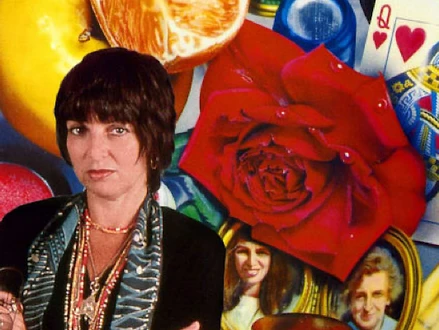

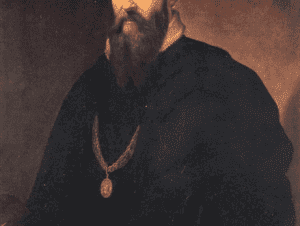
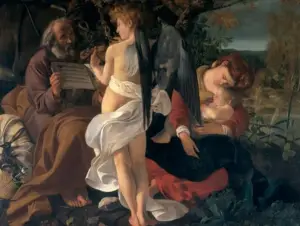


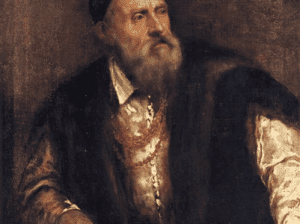
Responses